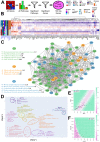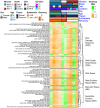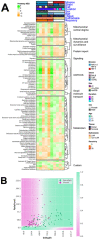This is a preprint.
More than a Feeling: Dermatological Changes Impacted by Spaceflight
- PMID: 36798347
- PMCID: PMC9934743
- DOI: 10.21203/rs.3.rs-2367727/v1
More than a Feeling: Dermatological Changes Impacted by Spaceflight
Update in
-
Transcriptomics analysis reveals molecular alterations underpinning spaceflight dermatology.Commun Med (Lond). 2024 Jun 11;4(1):106. doi: 10.1038/s43856-024-00532-9. Commun Med (Lond). 2024. PMID: 38862781 Free PMC article.
Abstract
Spaceflight poses a unique set of challenges to humans and the hostile Spaceflight environment can induce a wide range of increased health risks, including dermatological issues. The biology driving the frequency of skin issues in astronauts is currently not well understood. To address this issue, we used a systems biology approach utilizing NASA's Open Science Data Repository (OSDR) on spaceflown murine transcriptomic datasets focused on the skin, biomedical profiles from fifty NASA astronauts, and confirmation via transcriptomic data from JAXA astronauts, the NASA Twins Study, and the first civilian commercial mission, Inspiration4. Key biological changes related to skin health, DNA damage & repair, and mitochondrial dysregulation were determined to be involved with skin health risks during Spaceflight. Additionally, a machine learning model was utilized to determine key genes driving Spaceflight response in the skin. These results can be used for determining potential countermeasures to mitigate Spaceflight damage to the skin.
Conflict of interest statement
COMPETING INTERESTS Abzu is the developer of the QLattice20, the symbolic regression-method used in this work.
Figures









References
-
- Crucian B. et al. A case of persistent skin rash and rhinitis with immune system dysregulation onboard the International Space Station. J. Allergy Clin. Immunol. Pract. 4, 759–762.e8 (2016). - PubMed
-
- Law J., Gilmore S. & Kelly S. Postflight Rash and Skin Sensitivity Following a Year-Long Spaceflight Mission. Aerosp Med Hum Perform 91, 604–607 (2020). - PubMed
Publication types
Grants and funding
LinkOut - more resources
Full Text Sources

